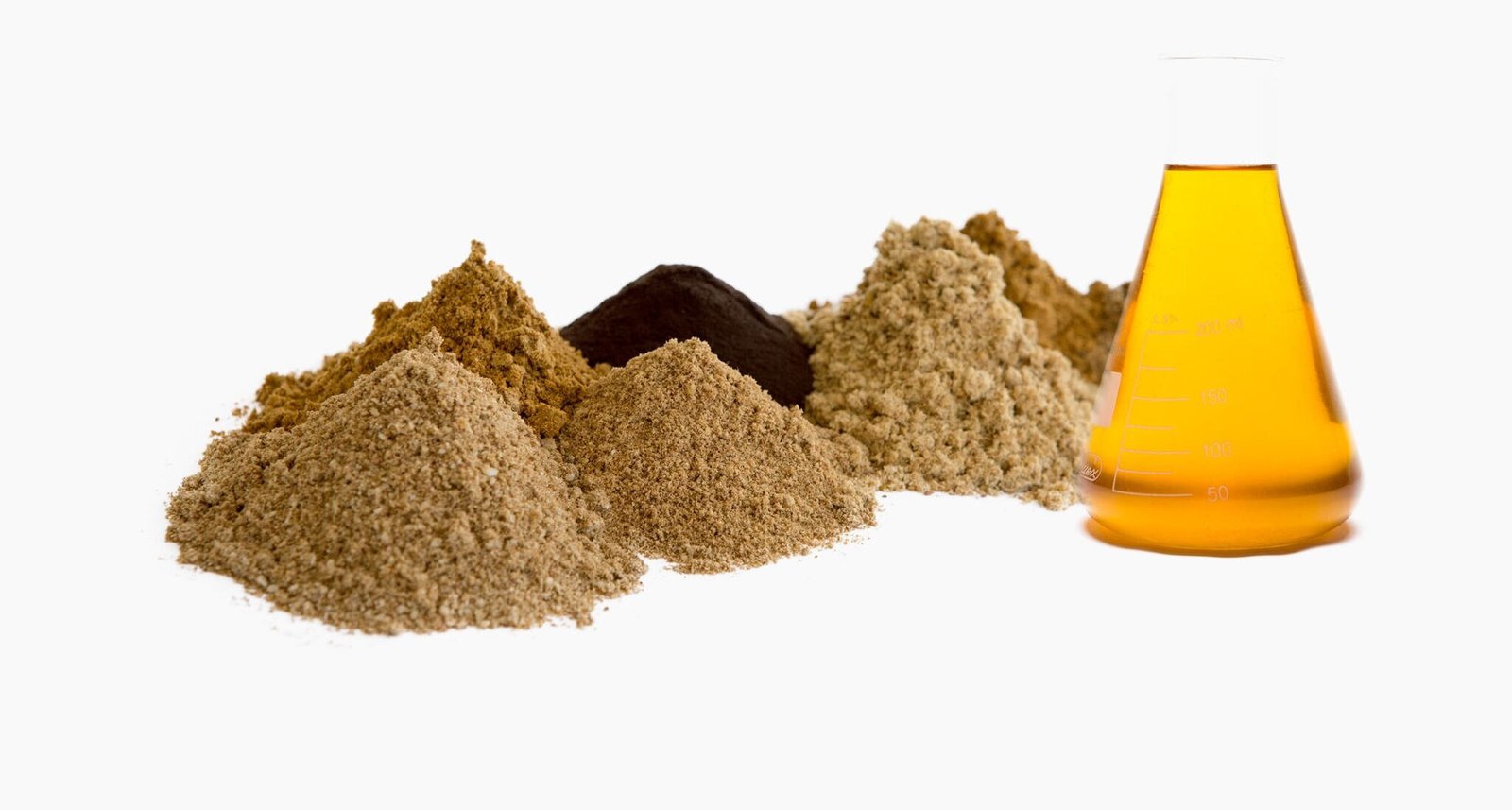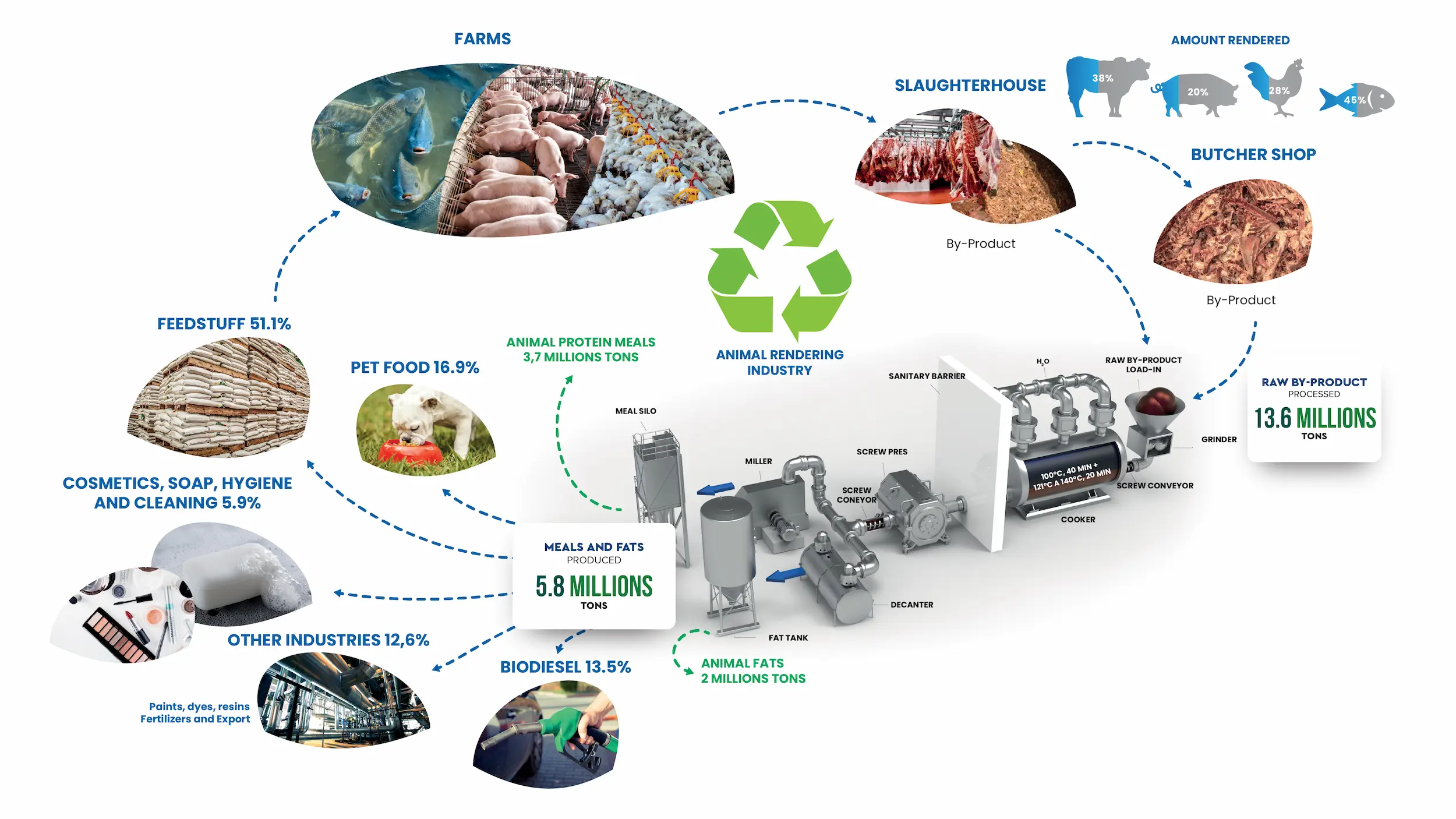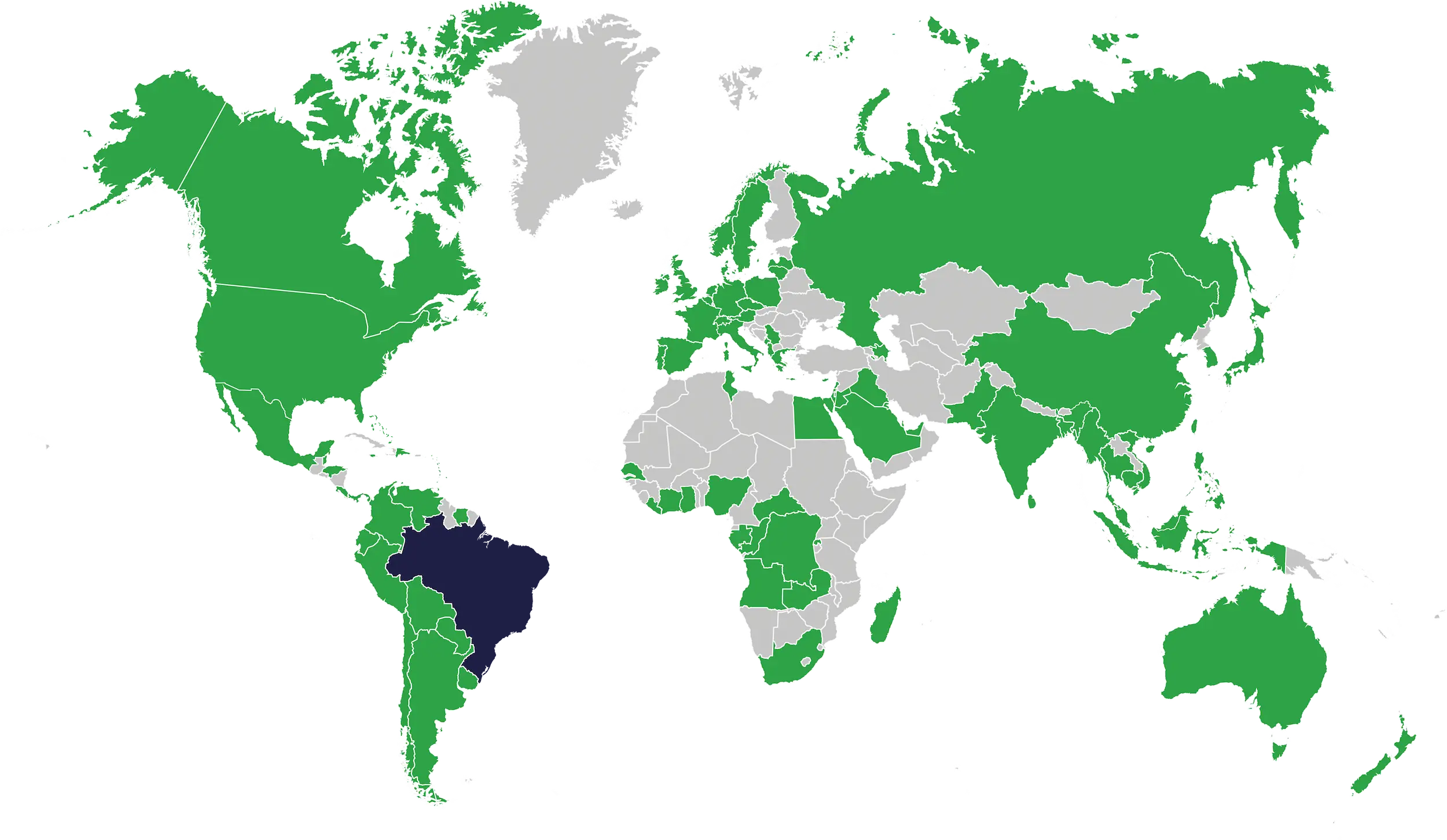RENDERING
Renderers convert animal tissue into usable materials. Local renderers reduce the use of (imported) vegetable proteins and oils, meaning lower demand for use. Renderers add value to farmers by avoiding the wastage of highly valuable raw materials. Products are used for many different markets as sustainably as possible. New innovations create better performing products with less energy use. Renderers contribute to the SDGs Zero Hunger, Good health and Well Being, Clean Water and Sanitation and Decent Work and Economic Growth.













